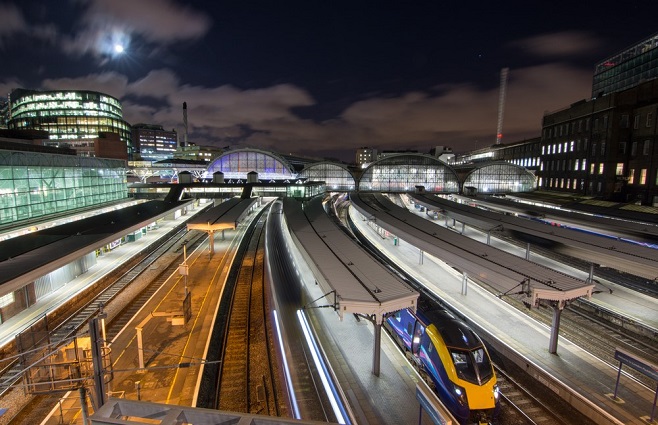London Commercial Property Market Review 2015
Jan 4 2016
Darren Best

2015 was a huge year. David Cameron won his second term in Parliament; Princess Charlotte was born, and the UK’s housing market exploded as typical house prices soared above £300,000. The commercial property market in London was no different, and in 2015 the market peaked to new inflation-busting highs with both rents and costs. But what does this mean for tenants and prospective buyers?
There has been a steady eastward migration of business tenants from the West End to the City and fringe. This rising trend has accelerated over the past year. London has always been an attractive, yet equally as expensive commercial hub, but according to the latest Carter Jonas report, London is now one of the most expensive office locations in the world, alongside Moscow and Hong Kong.
The cost rises have made Central London a particularly less tenant-friendly office market, and with the many commercial space alternatives and locations available, the commercial property market can be confusing. Now more than ever, it is vital to seek solid, professional advice when lease renewals are approaching or if expansion is on the horizon. Here at Savoy Stewart, with our experience we can continue to help potential property investors, and tenants alike, to ascertain not just a lucrative deal, but one that will offer security for the future in an ever more expensive, more imbalanced property market.
Image: Credit to LTerlecka / shutterstock.com
The most recent trends outlined in the Carter Jonas report suggest that buyers and tenants currently have considerably less negotiating power than previous years, with a serious imbalance between supply and demand in London’s most popular commercial office areas.
The likelihood of landlords offering longer rent-free periods and incentives are increasingly slim. Rent-free periods have only shortened since the global banking crisis and consequent drop in the commercial property market in mid-2009. At this time, rent-free periods were typically between 12 - 15 months for 5-year leases and 24 - 30 for a 10-year lease. Although the market has recovered and boomed markedly since, rent-free periods offered are a lot shorter now as a direct consequence of short supply. Typical rent-free periods offered for offices in the West End last year had been between 5 and 10 months on a 5 year lease for example.
With that being said, property experts CBRE have predicted total returns of 10.1% on UK commercial property investments next year. Such strong returns cannot be ignored. So, 2016 will be yet another strong year for both the UK economy and property investors alike. Non-domestic investment has risen and levelled out at around 70% of all Central London transactions after reaching 60% in 2014.
Overview of the Commercial Property Market, 2015
Rents this year have reached record levels in numerous London commercial property hotspots. There was a 20% rise in typical office quoting rents in West End prime locations between Q4 2014 and Q4 2015. This coupled with low vacancy levels and the lack of new development completions in these areas have created a shortage of affordable London commercial office space.
The most expensive area is unsurprisingly the West End with the highest rents in St James’s costing up to £150 per sq. ft. per annum rising to £180 per sq. ft. pa for premium upper floor office space. This is contrasted with typical landlord quoting rents as low as £32.50 per sq. ft. pa in secondary locations of Docklands such as South Quay and Limeharbour on Grade A new and refitted offices. The gulf in costs is phenomenal and therefore is unsurprising that many well-known corporations have decided to migrate their operations east across the capital this year. Notable examples include Pantheon and Cognolink’s relocation from prime central occupation to the City and City fringe. There are only three London office sub-markets that offer refurbished Grade A space at rents below £40.00 per sq. ft. pa – Docklands, east City fringe and Stratford, where previously there were seven in Q1 of 2014.
Even though cheaper rents and lower costs may be luring a number of tenants away from Central London, a mass migration is not predicted because of the draw of Central London’s talent pool and the need to attract and retain a skilled workforce. For those businesses who may be more averse to these risks, such as well-established, high-performing companies then Greater London locations at lower costs are indeed a viable prospect.
Outlook for the Commercial Property Market, 2016
The focus areas to look out for this year where rents and business rates cost lower are:
- Docklands
- South Bank
- Victoria
- Paddington
- Soho
- Greater London (such as Croydon, Brentford and Ealing)
Image: Credit to Joe Dunckley / shutterstock.com
Where to Look Out for in the Commercial Property Market?
-
Docklands
The Docklands has not experienced rental growth like the rest of London suggesting a weaker demand. It remains an attractive alternative for the possibility to negotiate rent-free periods of up to 14 months on five year leases and 26 months on ten year leases.
-
Victoria
Victoria is offering new developments for 2016 with the 480,000 sq. ft. mixed use office and residential Nova development and the 317,000 sq. ft. Tishman Speyer’s Verde Building. These new additions are set to rejuvenate the area with an exciting mix of retailers, owners and occupiers which is set to change the landscape as a whole. Victoria poses an attractive alternative for tenants (especially in Mayfair and Marylebone) looking to cut costs but keep a presence in the West End. Rents range from £67.50 - £72.50 per sq. ft. pa on lower floors and upwards of £75 per sq. ft. pa for Grade A office space on upper floors.
-
Paddington
Paddington has been neglected for many years as small fry in the West End office market. Due to the lack of good quality transport links to the rest of the capital and limited choice of retail, banking and restaurant facilities to supply workforces in the area. However, quoting rents reflect this with typical prices between £56.50 and £62.50 per sq. ft. pa. These kinds of prices are reasonably favourable in comparison to office space rents quoted in neighbouring locations such as Marylebone district (£79.50 - £92.50 per sq. ft.) and comparable West End locations like Victoria (£65 - £88.50 per sq. ft.).
New, good value business districts are emerging in areas on the outskirts of Central London such as, Battersea, White City, Wembley and Silvertown. This array of modern developments will not be available till 2018/19, but once open will bring a new lease of life to London’s wider suburbs.
With the many competing factors pressuring Central London tenants, a rise in office costs is one factor leaseholders can seek to make a difference with. Rents will continue to increase for the next couple of years according to predictions, but here is how you can lower office costs for the New Year.
Feature Image: Credit to franckreporter / shutterstock.com

